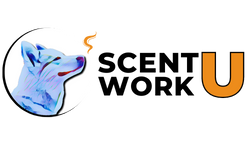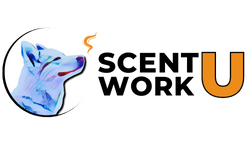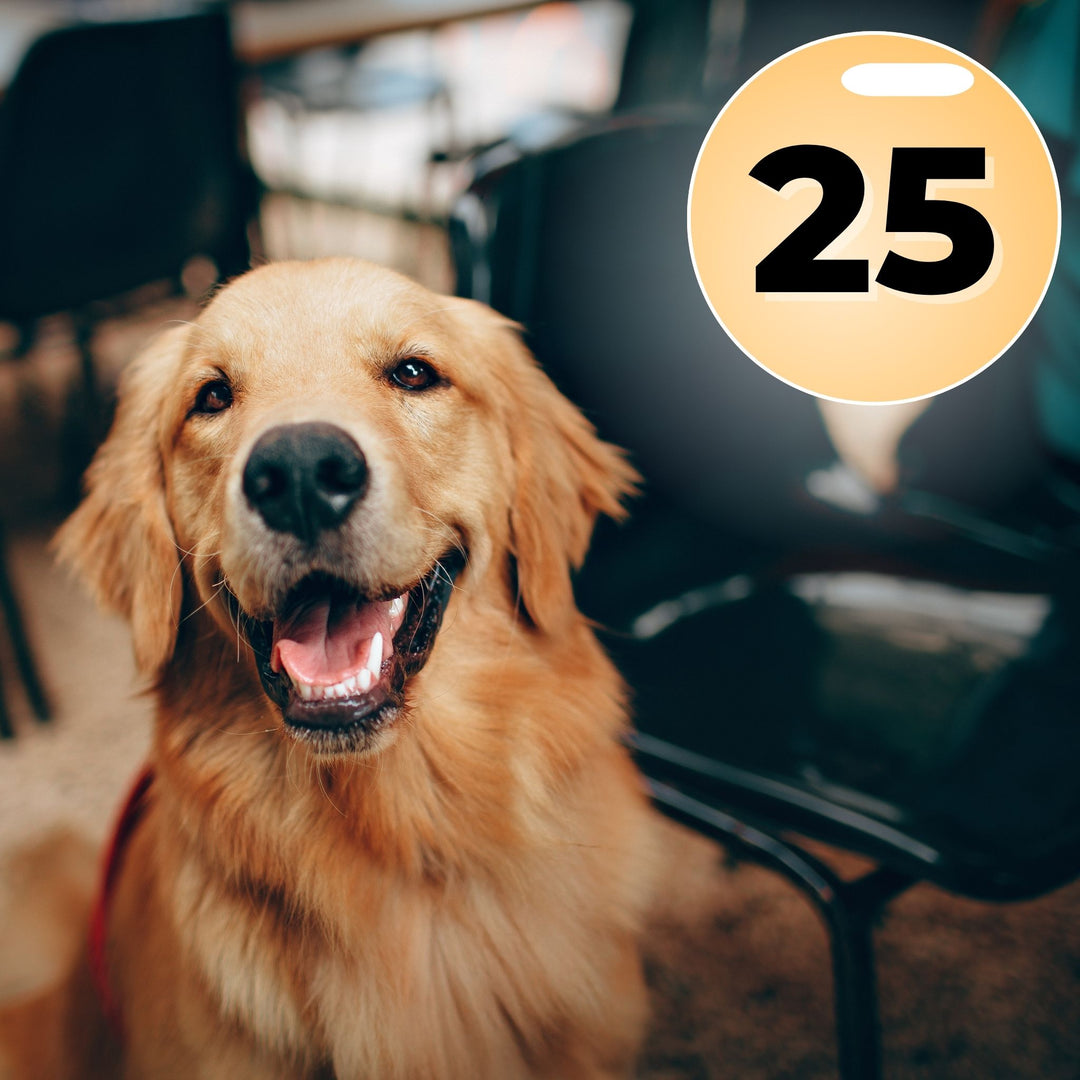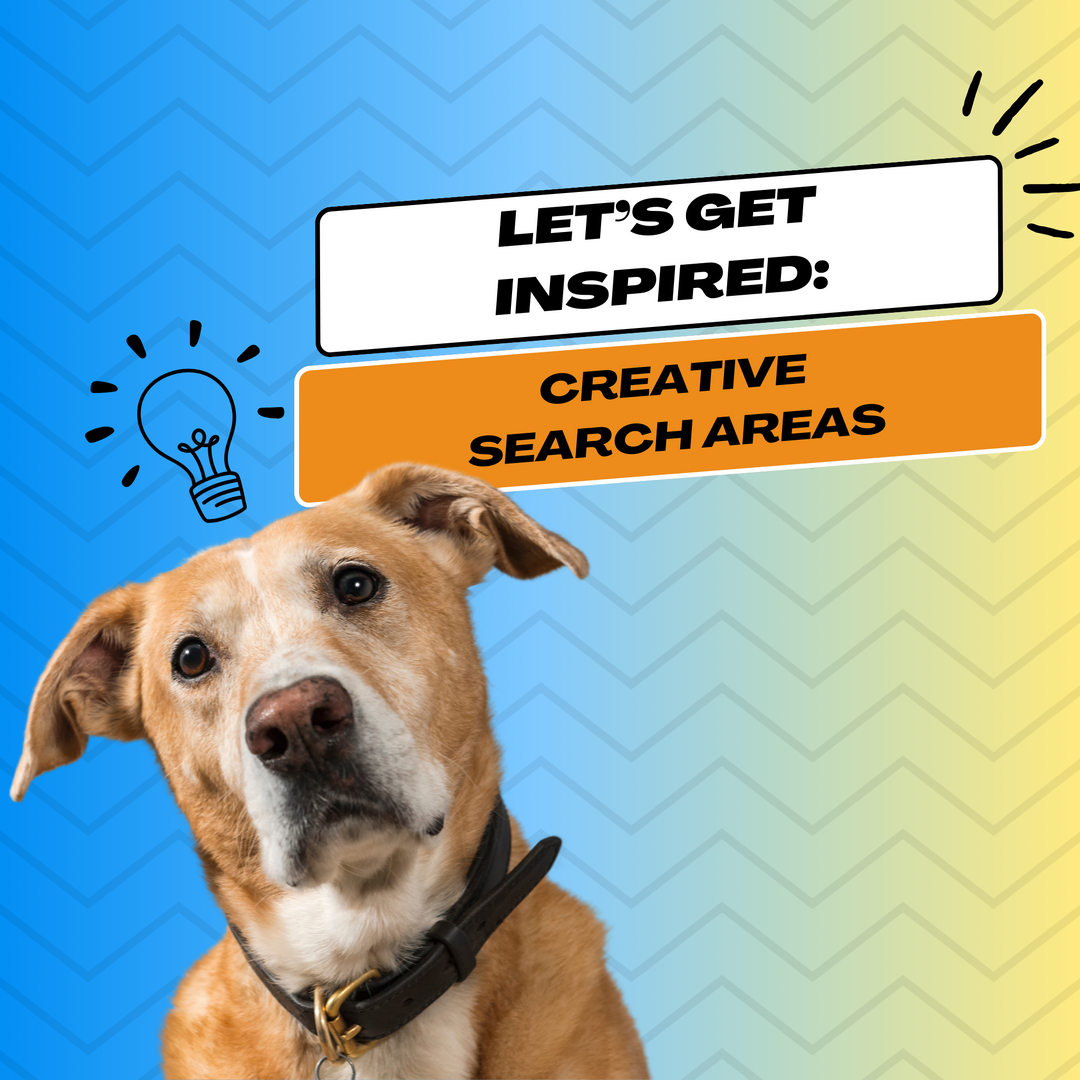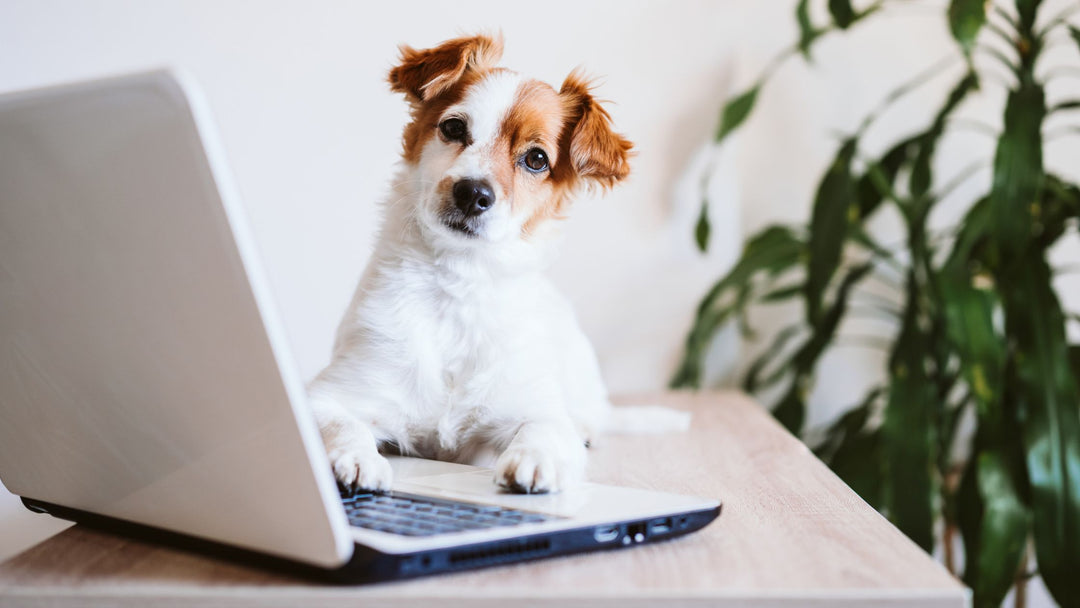Searching Planes

No, I do not mean the types of planes that fly through the sky, although competitors have indeed searched grounded and out-of-commission planes in certain upper level Scent Work trials! Rather I mean the ability of having your dog investigate an area low-to-the-ground, head-level and high above their head when working through a search area. Are you practicing these skills with your dog? If not, you should be.
IMPORTANCE OF EXPERIENTAL LEARNING
Our dogs are indeed amazing hunters with an incredible sense of smell. As trainers, it is NOT our job to teach our dogs HOW to use their nose. It would be wholly inappropriate to assume we could ever do such thing.
Training Scent Work means we expose our dogs to a variety of odor puzzles so they can determine how best to solve them. This is called experiential learning. Thus, if we want our dogs to be successful in Scent Work, particularly if we are interested in competing, we must expose them to the types of puzzles they will see in trial.
What does this have to do with the dog searching various planes? Well, if your dog has never been exposed to this type of hide placement, they would quite literally have no reason to tackle an odor problem in this manner!
Another way to think of it is this: if your dog only finds hides in a given location at ground-level, they have never had to see what the odor picture looks like when the hide is at or above their head. The last thing you would want is for their very first experience with this type of odor puzzle to be at a trial! We want our dogs to be proficient in their skills, building them in training, before we ever step foot at a trial.
Thus, it is essential that we present our dog with these types of odor puzzles, with hides placed at different planes, looking for the dog to start investigating these different planes (low, medium and high) all on their own when trying to sort out a problem.
HOW TO SET THIS UP
Look at this photo of my hallway. There are two cabinets and a middle drawer that you can pull out. Where do you think most people would place a hide?
Underneath the ridge of the lower cabinet door or inside the cabinet door itself, to present an inaccessible hide problem to the dog.
But in this photo alone, you have opportunities for a multi-plane hide placement. You could place a hide underneath the ridge of the lower cabinet, at the first knob, under the drawer, under the ridge of the upper cabinet and under the upper knob. See, different planes!
How do you think the odor picture will change with moving a hide in this manner? How do you think the dog will go about solving these puzzles? Intriguing, right?
I ran this very same exercise with my 17-month old Doberman, after months of placing individual hides low, medium and high. To see him work the space, first checking low, then at head level and then high all on his own brought tears to my eyes. How he would follow the channel or work along the wall, see if odor was collecting in the corner or if was inside the cabinet. This is all without ANY presentation from me. These were all things he did entirely on his own.
So how can you do this with your own dog? Find a similar set-up in your house, where you could conceivably place a hide at ground-level, head-level and above head-level. Offer each hide placement individually for your dog to solve. I would strongly urge you to use either primary or pairing, to ensure your dog can immediately self-reward, and then provide a jackpot when they are correct (3-5 treats fed at source while giving copious verbal praise). Then incorporate these various hide placements individually in other types of searches. Over time, you should start to see your dog investigating these various planes all on their own. That is your goal.
FINAL THOUGHTS
At no point when we are training should we ever assume that are teaching our dogs HOW to use their nose. It would be beyond presumptuous to assume we could ever do such a thing. However, we SHOULD identify ways we can present odor puzzles to our dogs so they can figure out how to solve those puzzles. Every dog will be different but providing those opportunities for learning is crucial for their success. So, when you are designing your training sessions, ensure to add various planes into your training plan.

Dianna has been training dogs professionally since 2011. She has done everything from teaching group training classes and private lessons, to specializing in working with fearful, reactive and aggressive dogs, to being a trial official and competition organization staff member.
Following a serious neck and back injury, Dianna was forced to retire from in-person dog training. But she was not ready to give up her passion! So, she created Pet Dog U and Scent Work University to provide outstanding online dog training to as many dog handlers, owners and trainers possible…regardless of where they live! Dianna is incredibly grateful to the amazingly talented group of instructors who have joined PDU and SWU and she looks forward to the continued growth of PDU and SWU and increased learning opportunities all of these online dog training platforms can provide.
In June 2021, Dianna and her business partner, Sean McMurray launched Cyber Scent Work, Inc., an organization that operates in the gray space between training and trialing in Scent Work. With Cyber Scent Work, Inc., handlers have the opportunity to earn Qs, titles and ribbons while also receiving helpful training advice regardless of whether they qualify or not! Be sure to check out Cyber Scent Work, Inc., you will be happy you did!
Join Our Newsletter
Stay up to date with all the happenings at Scent Work University, including the release of new online courses, seminars, webinars, eBooks and receive exclusive promotions and discounts!
